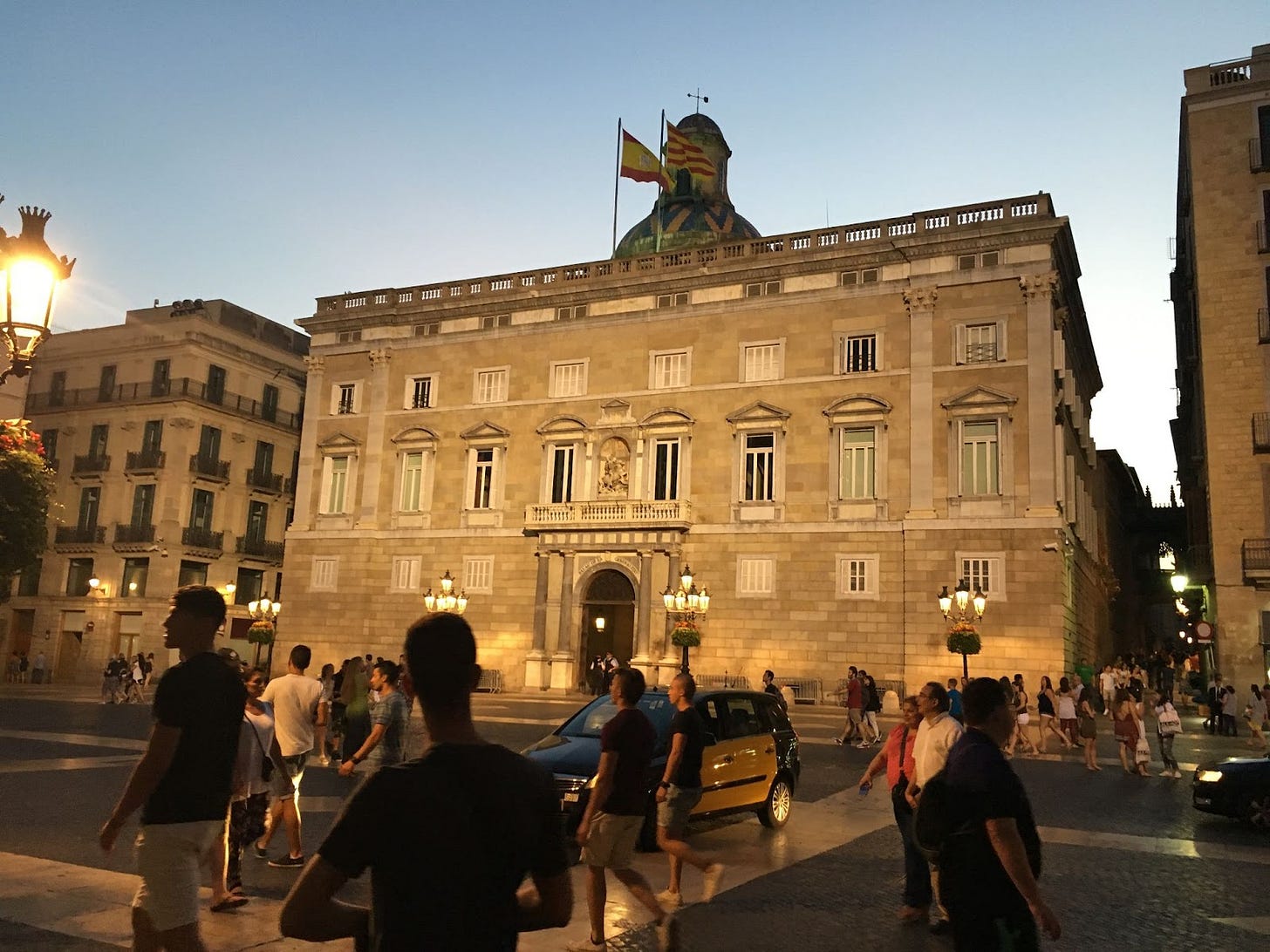Welcome
This month we are continuing our European Cities theme and we will travel to Spain and Barcelona. This issue will look at the city's history and Barcelona Cathedral.
In Issue 47 we will explore Antoni Gaudi’s remarkable influence on Barcelona, by visiting a number of his masterpieces.
Barcelona, the capital of Catalonia, is truly one of the great destinations in Europe.
What’s not to love about the Spanish weather, culture and food?
On another exciting note. I was recently appointed as a trustee of the Ewelme Almshouse Charity, which was established in 1437 by the Duchess of Suffolk.
I will be doing a special issue this month to talk about it, so watch out for it.
But for now, let’s head off to Barcelona, as we go Traveling Through History this week.
Michelle
Savvy Travel Historian
I also write weekly about topics relevant to women; Life, Kids, Business and You.
I’d love for you to subscribe using the link below.
European Cities - Barcelona, Spain
Background
With a history that is over 2,000 years old, Barcelona is a vibrant and historically rich city located on the northeastern coast of the Iberian Peninsula, and is the capital of Catalonia, an autonomous community of Spain.
With its roots as an ancient Roman military camp established around 15 BC, the city's name, originally Barcino, reflects its early Roman origins.
Barcelona can be accessed by plane, train, car and boat and it is located in the north-east of Spain along the Mediterranean.
History
There are two ‘legends’ around how the city was founded.
The first is that the father of Hannibal, Hamilcar Barca, a Carthaginian general, founded the city around 230 BC.
The second, is that Hercules founded the city before Rome. Jason and the Argonauts, searching for the Golden Fleece, travel with nine ships across the Mediterranean and one was lost off the Catalan coast and shipwrecked. Hercules located it and found the crew alive. They loved the location so much they named it ‘Barca Nona’ meaning the ‘Ninth Ship’.
There is little information on the area from 218 BC until 1stC BC.
The Roman Republic fought for control of the Iberian Peninsula, conquering the Carthaginians, with Augustus Caesar declaring victory in 19 BC. The Romans occupied Barcino (their name for Barcelona) until the Visigoths (a Germanic tribe) negotiated control of the area around 414.
Christians arrived in the area in the 500s and Jews in the mid-4thC.
Moorish (Muslim) forces arrived on the Iberian Peninsula in 711, assisting in the civil war which was underway and they seized power in 713 and ruled for around 85 years.
Son of Charlemagne, Louis the Pious, captured Barcelona in 801 and in 865, the hereditary County of Barcelona was created, which resulted in a succession of ‘Counts’, being administrators of the city.
Alfonso II of Aragon came to the throne in 1162 and through his parents (his father was Count Berenguer IV, Count of Barcelona, mother Petronilla of Aragon), inherited the administration of Aragon and Catalonia, which included Barcelona.
The Spanish Monarchy
When Ferdinand II of Aragon married Isabella I of Castile, the two royal lines were merged (they were the parents of Catherine of Aragon, first wife of Henry VIII) and while Madrid became the centre of political power, Barcelona throughout the middle ages became a significant maritime power, with its influence extending across the Mediterranean.
It was during this period that construction of many of its iconic Gothic structures, including the famous Barcelona Cathedral, occurred. The city was also a center of Catalan identity and culture, which has continued to be a defining characteristic through to the modern day.
The 19th and early 20thC marked a period of industrial and artistic revival known as the Renaixença. During this time, Barcelona underwent significant urban expansion, most notably with the development of the Eixample district, designed by Ildefons Cerdà in the 1850s. This era also witnessed the rise of Catalan Modernism, an artistic and architectural movement best embodied by the works of Antoni Gaudí, such as the Sagrada Familia, Casa Batlló, and Parc Güell (all of which we will look at in our next issue).
Spanish Civil War & Francisco Franco
The roots of Catalonian unrest (still evident today) can be traced back to the Spanish Civil War. Barcelona and most of Catalonia were Republican and General Francisco Franco was a Nationalist and this led to tensions and upheaval for most of the next 40 years.
The 20th century was tumultuous for Barcelona, witnessing periods of political unrest, harsh repressions from the Franco dictatorship, and the struggle for Catalan autonomy.
While economically Spain thrived under Franco after the Second World War, it came at the cost of tens of thousands of lives through his use of forced labour camps. His anti-communist stance garnered support, particularly with the USA, during the cold war.
Just prior to his death in 1975, he restored the Spanish Monarchy and Juan Carlos succeeded him and helped the country transition towards democracy after decades of authoritarian rule.
Since the return of democracy in Spain in the late 1970s, Barcelona has seen a resurgence in cultural and economic vitality.
In 1977 over a million Catalonians protested in Barcelona to restore the region's autonomy and this was granted one month later.
Barcelona was showcased on the world stage during the 1992 Olympics, which spurred a new wave of urban redevelopment.
Today, Barcelona is known for its rich cultural heritage, architectural marvels, vibrant street life, and dynamic mix of historical and modern influences. It remains a center of innovation, tourism, and a proud proponent of its unique Catalan identity.
Barcelona Cathedral
[Source]
The Cathedral of the Holy Cross and Saint Eulalia, also known as Barcelona Cathedral, is the seat of the Archbishop of Barcelona.
The Gothic cathedral was constructed between the 13thC and 15thC, with most of the construction occurring in the 14thC. The style is labeled ‘Catalan Gothic’ and is generally seen in the Barcelonian area of Spain.










